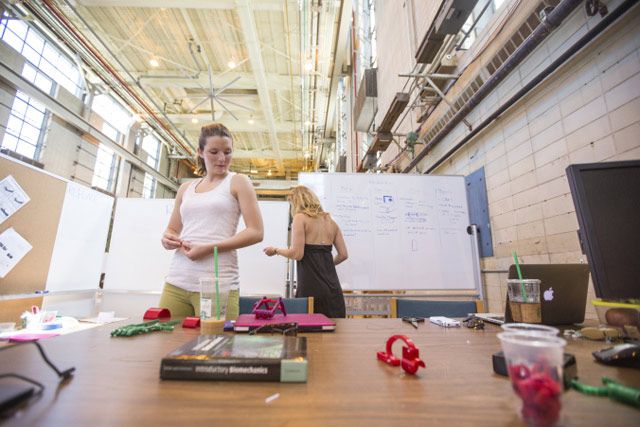The creation of 3-D-printed exoskeletons to be used in pediatric rehabilitation
Students Elena Ramirez ’15, Colleen Perry ’15, Jeffrey Peisner ’15, Dan Levy ’16, Same He ’16, and Emily MacMillan ’16 are on a mission to help young children regain full movement of their hands after suffering from a stroke. With the overarching goal of recreating movement through a 3D-printed device, the students approached the goal in their own way, each creating a novel exoskeleton, or device that works around body parts.
The students were inspired to pursue their research through the Mountaintop Project after viewing a video of a two-year-old girl unable to move her arms until aided by a 3-D device. The students first design their exoskeleton on the computer and then use the 3-D printer on Mountaintop to produce them.
“The best part about Mountaintop is that we decided exactly what we wanted to do and Lehigh gave us resources so we could learn the skills needed to make it a reality,” Elena said in an earlier interview.
The 3-D printer, in addition to mass-produced parts such as rubber bands and strings, creates a highly inexpensive device for the children to use. These exoskeletons are customizable to each individual and could one day be used in rehabilitative therapy.
"3D printing has the potential to revolutionize the medical field,” said Colleen Perry.
The students hope to continue to innovate and expand their project to help even more people.
-Sarah Plombon '16 is a journalism student interning with the P.C. Rossin College of Engineering and Applied Science.


